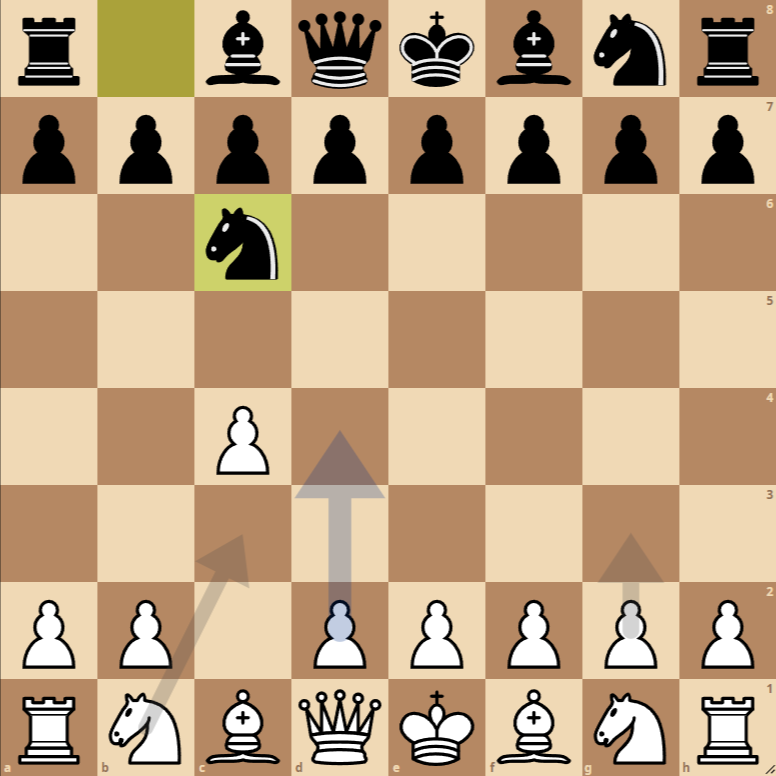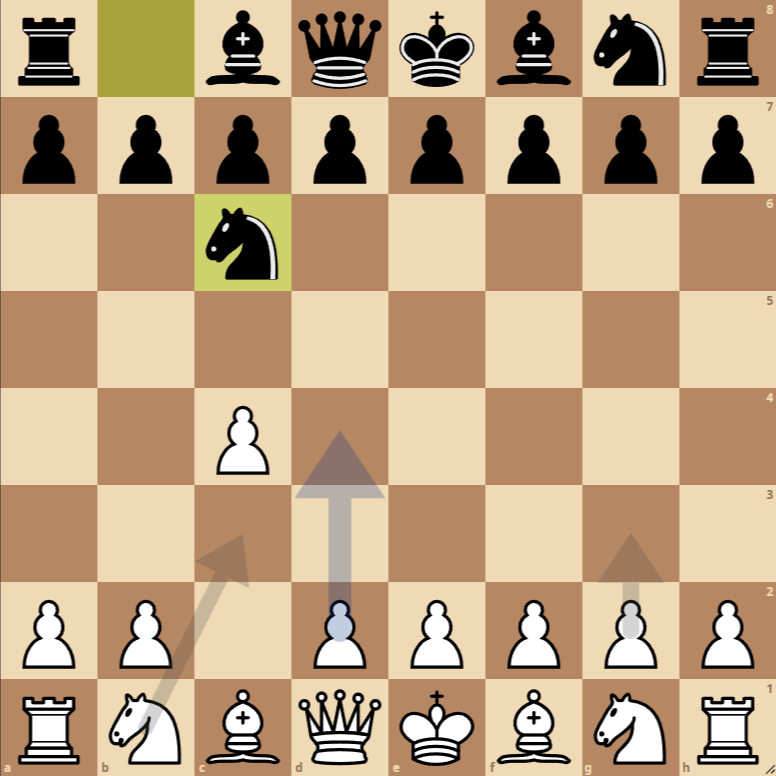How to Play the English Opening: Anglo-Lithuanian Variation

The English Opening, specifically the Anglo-Lithuanian variation, starts with a focus on controlling the center from the flank. The initial moves are:
- 1. c4: This is a very popular opening move, known as the English Opening. It advances the pawn on the c-file two squares forward, aiming to control the center of the board but from a more lateral perspective. This move also prepares the way for the development of the light-squared bishop.
- 1… Nc6: Black responds by developing their knight to c6. This move is part of the Anglo-Lithuanian Variation and challenges White’s control of the center while preparing for the pawn advance d7-d5.
Variations of the English Opening: Anglo-Lithuanian Variation
There are various continuations after the initial moves in the Anglo-Lithuanian Variation of the English Opening. Some of the most important ones include:
Variation 1: 2. Nc3
In this variation, White develops their knight to c3, supporting the pawn on c4 and preparing additional control of the center. This move also opens lines for the light-squared bishop and sets the stage for potential castling.
Variation 2: 2. g3
This move is a preparation to fianchetto the light-squared bishop, placing it on g2. It reinforces control of the center and prepares for a solid kingside castling. It’s a move that aims for a more positional game.
Variation 3: 2. e4
This move is more aggressive, seeking rapid control of the center and setting the stage for a dynamic game. The pawn on e4 supports the pawn on c4 and directly challenges Black pieces that may advance toward the center.
English Opening: Anglo-Lithuanian Variation
Current Position: 1.c4 Nc6
The English Opening, starting with 1.c4, is one of the most popular and flexible openings in chess. White’s move aims to control the center of the board from a flank, preparing for a smooth development of their pieces. Black’s move, 1…Nc6, is less common and leads to the Anglo-Lithuanian Variation, a line that can lead to interesting and unconventional positions.
Strategies and Tactics for Both Sides
White (1.c4):
- Control of the center: Although 1.c4 doesn’t occupy the center directly, it lays the groundwork for stronger control in the future, possibly with d4 or e4.
- Flexibility: White’s initial move allows for a wide range of setups and transitions into different opening systems while maintaining a solid and coherent structure.
- Piece development: White can opt for a quick development of their minor pieces, such as Nc3 and Bf4 or Bg5.
Black (1…Nc6):
- Asymmetric response: Black aims to counter White’s control of the center from a different angle, keeping options open for later development.
- Preparation for e5: This knight move may prepare the advance e5, directly challenging the center and activating other pieces.
- Positional flexibility: Black maintains a flexible pawn structure, allowing adaptation to White’s choices.
Next Best Moves
White:
- Nc3: Develops a minor piece and supports the advance of d4, increasing control of the center. It also prepares a possible kingside castling.
- g3: Prepares to fianchetto the bishop to g2, where it will exert strong influence on the center and long diagonals. This plan is associated with positional play and long-term strategic plans.
- d4: Advances aggressively in the center, challenging Black’s potential expansion with e5. This move can lead to more tactical and open positions.
Black:
After any of these White moves, Black should consider developing their minor pieces (Bf5, e6, Bg4), preparing e5, or even d5 to challenge the center. The choice depends on personal preference and playing style.

